Cultural connection transforms Avenue C Plaza in Kensington
Kensington would not be the vibrant place it is without Avenue C Plaza. Through the collaborative efforts of the Kensington Cultural Council, this once-neglected asphalt triangle has been transformed into a multilingual, multigenerational community gathering space. Working closely with local cultural groups including The Singing Winds, BIPA, Casa Cultural, Arts & Democracy, NOCD-NY and partners such as Artbuilt Mobile Studio and Kensington Stewards, the Council has prioritized cultural exchange, community dialogue and inclusive programming that celebrates one of NYC’s most diverse immigrant neighborhoods. Among the many services the Council provides is the stewardship of Avenue C Plaza, the area’s marquee public space. The plaza has become a destination for cultural celebrations, art workshops, community services, and a safe space where women and youth can step into leadership roles.
It’s impressive work! So impressive that we are awarding the Kensington Cultural Council and its partners at this year’s Public Space Awards. To gear up for the Council’s recognition at this year’s event, we spoke with members of the KCC to tell us a little about the vital work they do in Brooklyn.
For those that haven’t spent time in Kensington before, how would you describe the neighborhood?
Kensington is a diverse and vibrant neighborhood, home to many South Asian and Latin American residents. Also known as Little Bangladesh, residents speak more than 33 languages and dialects including English, Bangla, Spanish, Arabic, Russian, Urdu, Chinese, and Yiddish.
The neighborhood’s streets haven't always appeared as they do today. Tell us about how Avenue C Plaza came to be.
For many years, at Avenue C and McDonald Avenue above the terminus of the Church Avenue Station G train, a wide asphalt triangle between neighborhood mosques collected debris, blight, and traffic risks. In 2015, community cultural groups, The Kensington Stewards, and NYC Council District 39 leadership joined forces to designate the triangle as a plaza. A product of several years of collaborative community planning and capital investment, Avenue C Plaza is now a multilingual, multigenerational community gathering space that hosts cultural programs, art workshops and classes, celebrations, and more.
It’s wonderful what you’ve made happen. Of course, you activate and care for the plaza on an ongoing basis. What can you tell folks newer to your work about how you make all of these community events & services happen?
Avenue C Plaza has developed a community-led stewardship model grounded in Kensington’s grassroots networks and diverse cultures. It’s a DOT Plaza Partnership facilitated by the Kensington Cultural Council including The Singing Winds, BIPA, Casa Cultural, Arts & Democracy, NOCD-NY, and partners such as Artbuilt Mobile Studio and The Kensington Stewards.
Wow, so a truly collaborative effort. How did the Council’s members initially connect?
Most have collaborative relationships that sprouted from being parents in local schools. It is extraordinary when neighbors come together in Kensington, one of the most diverse immigrant neighborhoods in NYC.
Our neighborhood network came together organically over multiple years, building long term relationships of trust with neighborhood leaders, youth and elders, with the ability of partners to share leadership, collaborate, and have collective impact. Artists and culture bearers and their neighbors have a new space to connect, share resources, create, teach, perform, and get support.
What can folks expect to find happening at the plaza, thanks to the Council and its partners?
Collectively, groups present multilingual dance; storytelling; visual arts; parades; festivals including Día de los Muertos and Boishakh, Bengali New Year; a multicultural Community Iftar; ESL, music and movement classes; concerts; public art exhibitions; and more.
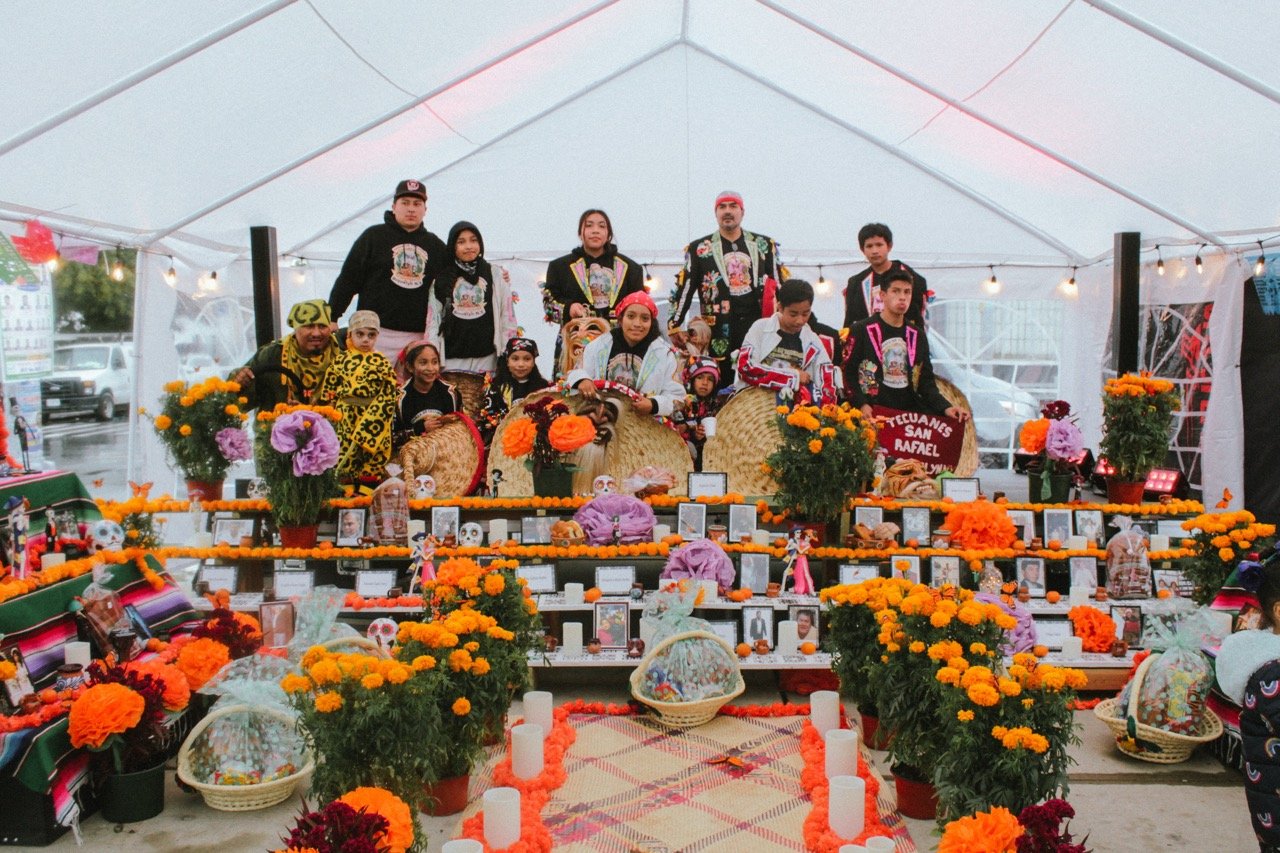
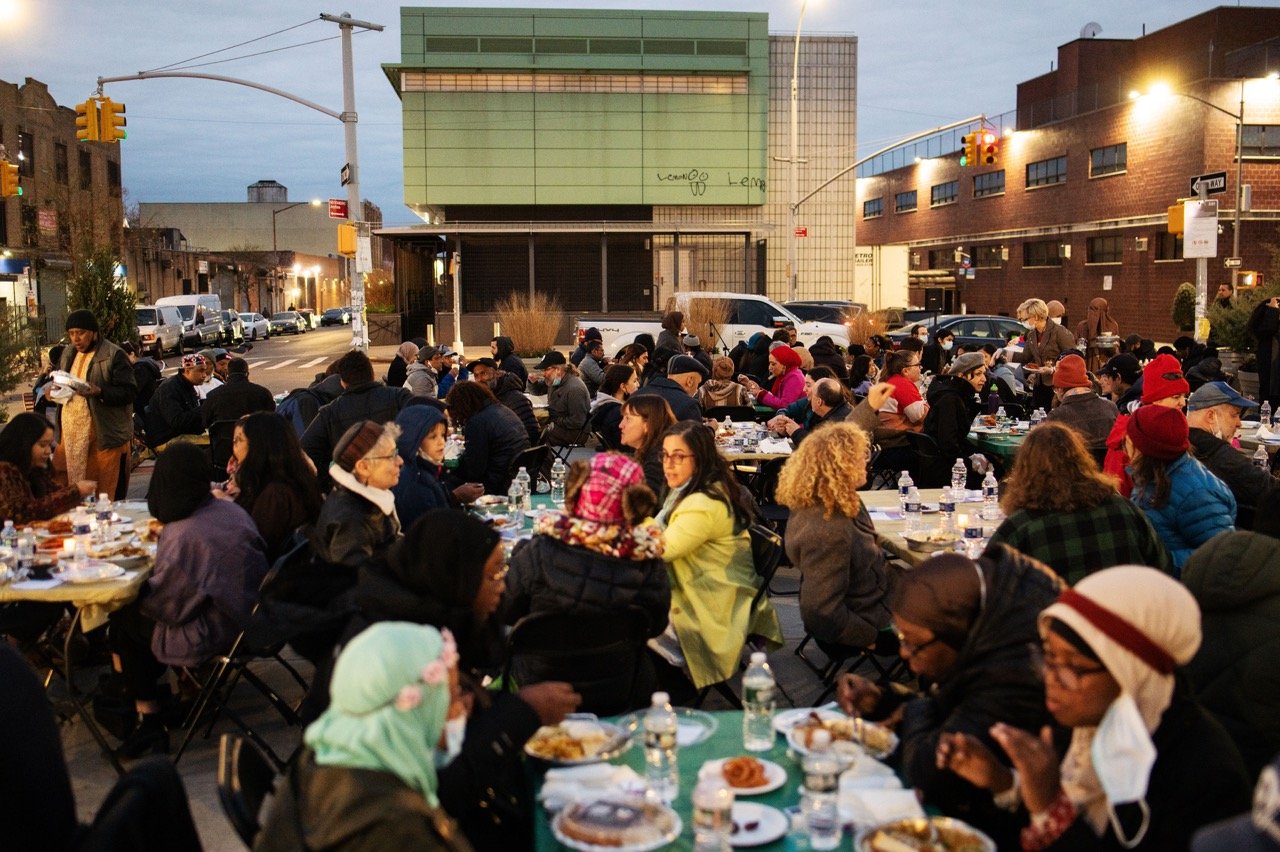
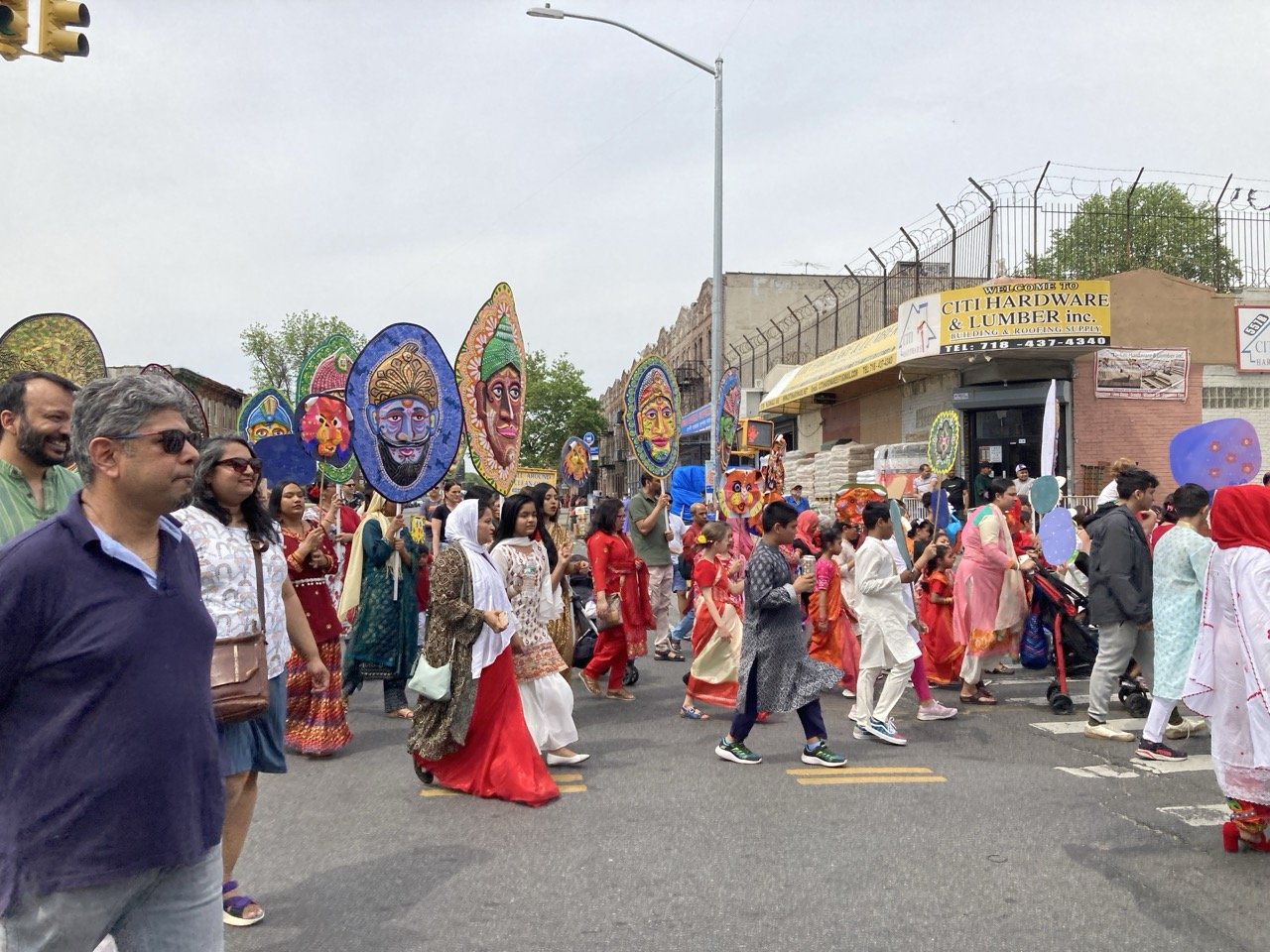
Beautiful. What drives your work forward and how do you see its role when it comes to creating a sense of community for Kensington?
Programs at the plaza reflect the traditional cultures of immigrant families and strengthen cultural exchange and community dialogue, demonstrating the power of people to come together across differences, especially in moments of struggle and resilience.
When it comes to the built environment, how have you navigated it to create new opportunities for community expression and leadership?
Brooklyn and Kensington are full of cultural assets, but access to public spaces is limited and access to resources and activities can be hard for families. Historically, cultural celebrations in Kensington can remain within their respective communities and minimally accessible to others. Youth and women were often outside the center or left out of public programming.
The plaza is one of the few places in the neighborhood that is true public space and there is strong community demand and momentum for the project. It’s a welcome and free space for everyone and available for use as community members need, especially elevating the role of women and youth in the community.
It’s great to hear how you’ve seen folks step into their own.
The plaza creates a safe and welcoming place where women can step out of gender segregation and isolation to gather, enjoy communal activities, and express themselves freely. Women and youth have explored topics through writing and textile workshops and the Community Iftar has become a space where young female artists can showcase their talents and engage with their community in a supportive environment. The KCC and partners have been instrumental in cultivating young leaders, with generations stepping into program organizing and producing roles, nurturing access to higher education and even careers in cultural practice and public service.
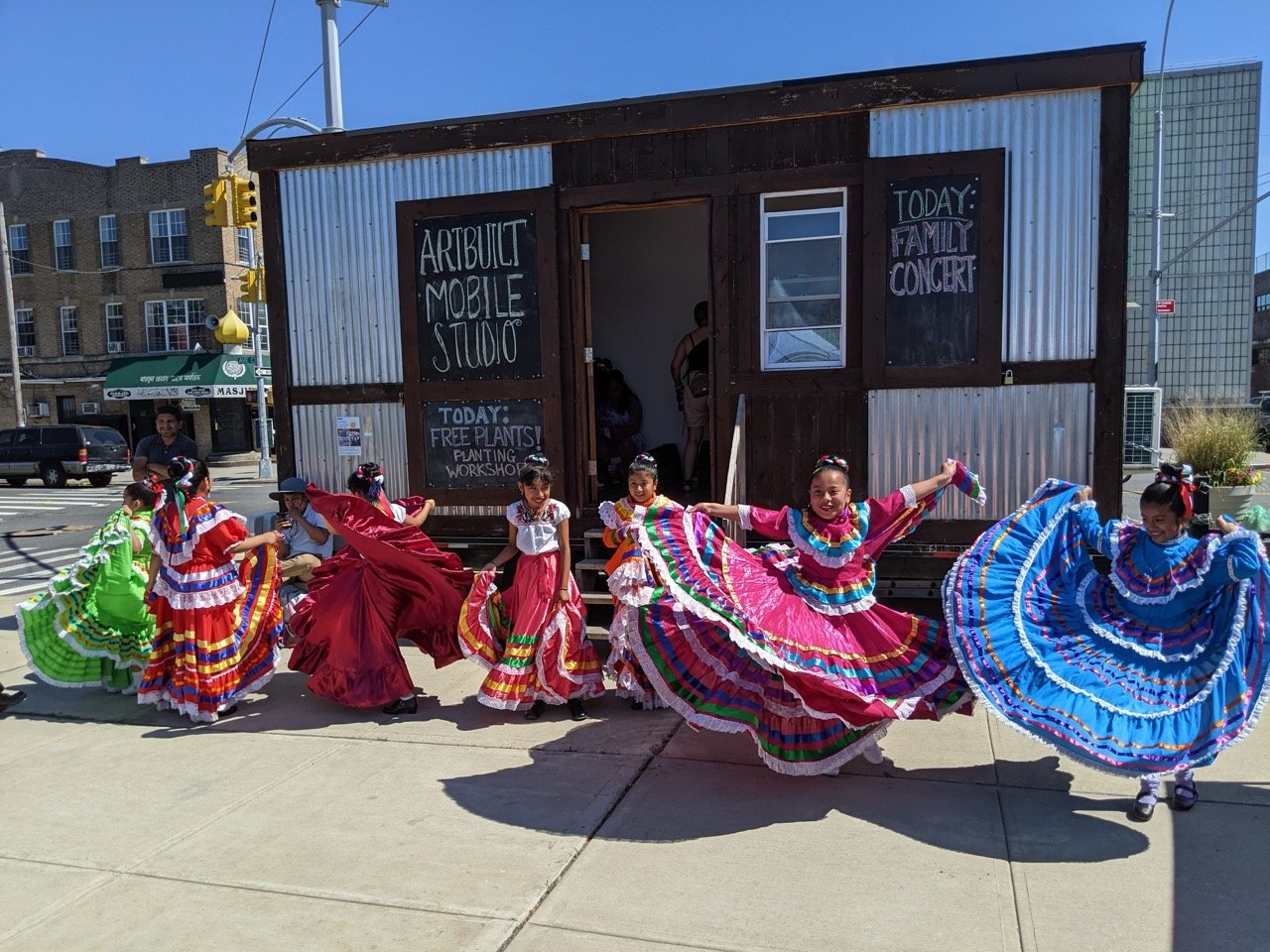
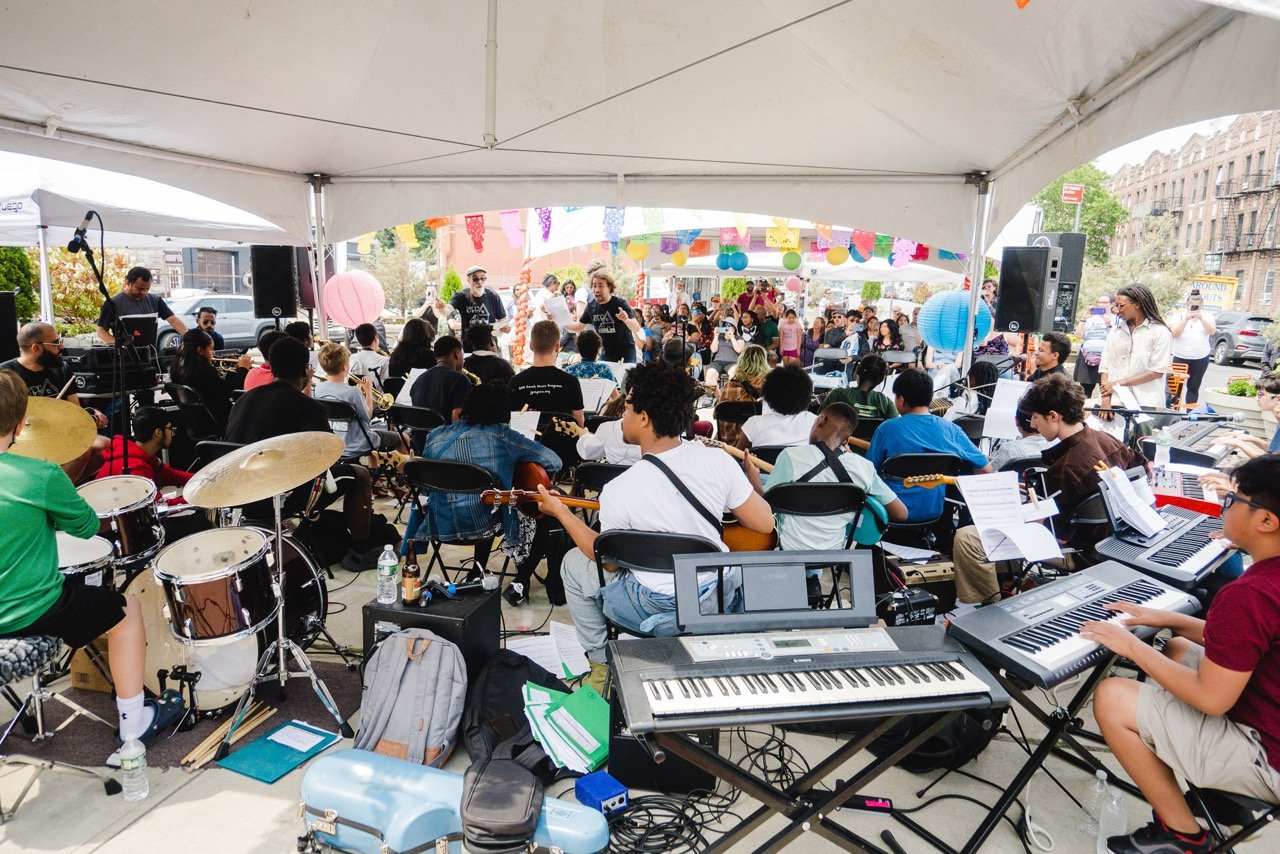
When you mention resources and support, you’ve shared about how the neighborhood’s cultural events have connected residents into a broad sense of civic participation and engagement. What has that looked like over recent years?
As governmental support systems frayed under the pressure of the COVID-19 pandemic, the project highlighted critical food security and community health needs. For example, Kensington Cares—a photo exhibition at the plaza by Anna and Jordan Rathkopf—featured the local solidarity economies that mobilized food distribution and mutual aid to support neighbors during the crisis. Local artists and organizations have also integrated programming with community health and social service providers, language access, and transportation safety. Events at the plaza have also included opportunities to engage with the Participatory Budgeting process, empowering residents to have a direct say in how public funds are allocated.
So, it sounds like these public spaces became an important part of what binds the Kensington community together. What do you want folks to know about neighborhood-led public spaces like yours, and how the city can support your work?
As the plaza becomes consistently more popular, we continue to invest in technical and marketing exchange across our partners, increasing our presence on promotional platforms, including the development of a shared community calendar. We think about expansion of the plaza and continuity of our programs. For some of our flagship events, we have initiated street closures, which requires an extra permitting process that can sometimes face approval delays. There are also increased expenses to support those fees and scaled up programming.
Of course, our efforts are reliant on consistent and growing fundraising for cultural infrastructure support, across official electeds’ terms, for which we have been fortunate in an increasingly challenging funding climate. Sustained funding from the City Council through the Cultural Immigrant Initiative, DOT’s Plaza Equity program, and SBS’s Neighborhood Development Fund have provided critical support.Challenges include funding that requires spending up front followed by reimbursement, which is particularly difficult for small organizations.
Our work is contingent upon and often responds to broader challenges that the community faces regarding immigrant rights, public health, and food security. We are a unique public platform to help elevate the work of groups that support such needs, like food distribution efforts by local groups such as People in Need and Kensington-Windsor Terrace Mutual Aid.
Community input and the Participatory Budgeting (PB) process has expressed the need for an indoor cultural hub that can operate throughout the year. The KCC has been engaging the community around this idea and what they would like to see. Local organizations have begun hosting Saturday cultural programs at local schools PS 230 and PS 179 and we are looking to identify a storefront for a pilot “pop-up,” which can provide space for art-based workshops, music jams, resource and information sharing, and planning for a permanent space. We also hope for rotating exhibits in the storefront windows highlighting programming happening throughout the community.
Looking ahead, what do you hope Avenue C Plaza’s legacy will be for Kensington and perhaps as a model for other neighborhoods across New York City?
We hope that the Avenue C Plaza demonstrates the power of arts and culture in public spaces, the importance of community decision making and stewardship, and the impact of sustained City funding that has equity as a core principle.
We want to thank the KCC and Tom Oesau from NOCD-NY for taking the time to talk with us! If you are interested in learning more about Avenue C Plaza and its programming, check out their website and follow on social media to stay updated on upcoming events and cultural celebrations. And you can celebrate their community work by joining us all at the Public Space Awards on May 1st, where the Kensington Cultural Council will be recognized for their transformative work in creating inclusive public spaces. It’ll be a fun night full of New York City lights and leaders just like the dedicated members of the KCC and their partners. Get your ticket today! We look forward to seeing you there and learning more about how community-led public spaces like Avenue C Plaza are strengthening neighborhoods across our city.


